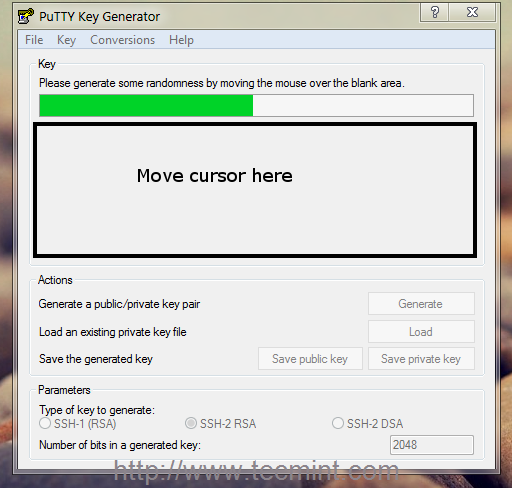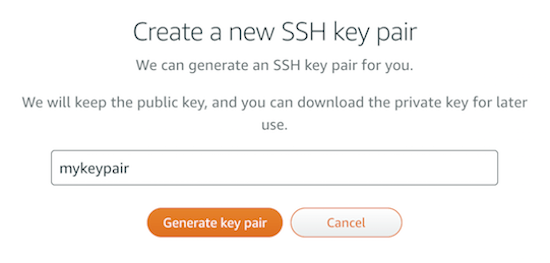고정 헤더 영역
상세 컨텐츠
본문

How to regenerate new ssh server keys This is an unusual topic since most distribution create these keys for you during the installation of the OpenSSH server package. But it may be useful to be able generate new server keys from time to time, this happen to me when I duplicate Virtual Private Server which contains an installed ssh package. Apr 19, 2019 In PowerShell, change directories to the path above where the SSH keys are stored, then enter the cmdlet below to being generating the key pair. In order to generate a unique set of.
- Ssh Server Download
- Generate Ssh Server Host Key West
- Ssh Host Key Generate
- Generate Ssh Key Mac
- Generate Ssh Server Host Key Is Not Cached In The Registry
- Ssh Server Wiki
- Create Ssh Host Key
Introduction
Secure Shell (SSH) is an encrypted protocol used by Linux users to connect to their remote servers.
Generally, there are two ways for clients to access their servers – using password based authentication or public key based authentication.
Using SSH keys for authentication is highly recommended, as a safer alternative to passwords.
This tutorial will guide you through the steps on how to generate and set up SSH keys on CentOS 7. We also cover connecting to a remote server using the keys and disabling password authentication.
1. Check for Existing Keys
Prior to any installation, it is wise to check whether there are any existing keys on the client machines.
Open the terminal and list all public keys stored with the following command:

The output informs you about any generated keys currently on the system. If there aren’t any, the message tells you it cannot access /.ssh/id_*.pub , as there is no such file or directory.
2. Verify SSH is Installed
To check if thw package is installed, run the command:
If you already have SSH, the output tells you which version it is running. Currently, the latest version is OpenSSH 8.0/8.0p1.
Note: Refer to our guide If you need to install and enable SSH on your CentOS system.
Steps to Creating SSH keys on CentOS
Step 1: Create SSH Key Pair
1. Start by logging into the source machine (local server) and creating a 2048-bit RSA key pair using the command:
Ssh Server Download
If you want to tighten up security measures, you can create a 4096-bit key by adding the -b 4096 flag:
2. After entering the command, you should see the following prompt:
3. To save the file in the suggested directory, press Enter. Alternatively, you can specify another location.
Note: If you already have a key pair in the proposed location, it is advisable to pick another directory. Otherwise it will overwrite existing SSH keys.
4. Next, the prompt will continue with:
Although creating a passphrase isn’t mandatory, it is highly advisable.
5. Finally, the output will end by specifying the following information:
Now you need to add the public key to the remote CentOS server.
You can copy the public SSH key on the remote server using several different methods:
- using the ssh-copy-id script
- using Secure Copy (scp)
- manually copying the key
The fastest and easiest method is by utilizing ssh-copy-id. If the option is available, we recommend using it. Otherwise, try any of the other two noted.
1. Start by typing the following command, specifying the SSH user account, and the IP address of the remote host:
If it is the first time your local computer is accessing this specific remote server you will receive the following output:
Generate Ssh Server Host Key West
2. Confirm the connection – type yes and hit Enter.
3. Once it locates the id_rsa.pub key created on the local machine, it will ask you to provide the password for the remote account. Type in the password and hit Enter.
4. Once the connection has been established, it adds the public key on the remote server. This is done by copying the ~/.ssh/id_rsa.pub file to the remote server’s ~/.ssh directory. You can locate it under the name authorized_keys.
5. Lastly, the output tells you the number of keys added, along with clear instructions on what to do next:
1. First, set up an SSH connection with the remote user:
2. Next, create the ~/.ssh directory as well as the authorized_keys file:
3. Use the chmod command to change the file permission:
chmod 700 makes the file executable, while chmod 600 allows the user to read and write the file.

4. Now, open a new terminal session, on the local computer.
5. Copy the content from id_rsa.pub (the SSH public key) to the previously created authorized_keys file on the remote CentOS server by typing the command:
With this, the public key has been safely stored on the remote account.
1. To manually add the public SSH key to the remote machine, you first need to open the content from the ~/.ssh/id_rsa.pub file:
2. As in the image below, the key starts with ssh-rsa and ends with the username of the local computer and hostname of the remote machine:
3. Copy the content of the file, as you will need later.
4. Then, in the terminal window, connect to the remote server on which you wish to copy the public key. Use the following command to establish the connection:
5. Create a ~/.ssh directory and authorized_keys file on the CentOS server with the following command:
6. Change their file permission by typing:
Ssh Host Key Generate
7. Next, open the authorized_keys file with an editor of your preference. For example, to open it with Nano, type:
8. Add the public key, previously copied in step 2 of this section, in a new line in (under the existing content).
9. Save the changes and close the file.
10. Finally, log into the server to verify that everything is set up correctly.
Once you have completed the previous steps (creating an RSA Key Pair and copying the Public Key to the CentOS server), you will be able to connect to the remote host without typing the password for the remote account.
All you need to do is type in the following command:
If you didn’t specify a passphrase while creating the SSH key pair, you will automatically log in the remote server.
Otherwise, type in the passphrase you supplied in the initial steps and press Enter.
Once the shell confirms the key match, it will open a new session for direct communication with the server.
Although you managed to access the CentOS server without having to provide a password, it still has a password-based authentication system running on the machine. This makes it a potential target for brute force attacks.
You should disable password authentication entirely by following the outlined steps.
Note: Consider performing the following steps through a non-root account with sudo privileges, as an additional safety layer.
1. Using the SSH keys, log into the remote CentOS server which has administrative privileges:
2. Next, open the SSH daemon configuration file using a text editor of your choice:
3. Look for the following line in the file:
4. Edit the configuration by changing the yes value to no. Thus, the directive should be as following:
5. Save the file and exit the text editor.
6. To enable the changes, restart the sshdservice using the command:
Generate Ssh Key Mac
7. Verify the SSH connection to the server is still functioning correctly. Open a new terminal window and type in the command:
In this article, you learned how to generate SSH key pairs and set up an SSH key-based authentication. We also covered copying keys to your remote CentOS server, and disabling SSH password authentication.
Next, You Should Read:
SSH keys are a way to identify trusted computers, without involving passwords. The steps below will walk you through generating an SSH key and adding the public key to the server.
Step 1: Check for SSH Keys
Generate Ssh Server Host Key Is Not Cached In The Registry
First, check for existing SSH keys on your computer. Open Git Bash, Cygwin, or Terminal, etc. and enter:
Check the directory listing to see if you already have a public SSH key. By default, the filenames of the public keys are one of the following:
- id_dsa.pub
- is_ecdsa.pub
- id_ed25519.pub
- id_rsa.pub
If you see an existing public and private key pair listed (for example id_rsa.pub and id_rsa) that you’d like to use, you can skip Step 2 and go straight to Step 3.
Ssh Server Wiki
Step 2: Generate a new SSH key
With your command line tool still open, enter the text shown below. Make sure you substitute in your email address:
You’ll be asked to enter a passphrase, or simply press Enter to not enter a passphrase:
World war 3 key generator keygen for full game + c. Fortnite: battle royale key generator keygen for f. Next car game: wreckfest key generator keygen for. Fallout 76 key generator keygen for full game + cr. How do i create and code a product key into my c# App. Visual Studio Languages. Then you will use the Serial Maker to make a serial key. Serial Key Generator is application specially designed for software developers to help protect your applications by serial key registration. Generate serial keys using custom number of columns. Now in Setup I am just getting one key input area like below. And I want to show the machine key which is created for the specific system, above the serial key input area. My need is that the end user or buyer of the Software call me and give me the machine key and then I will calculate a key using that key and send back to client or buyer. Serial key generator for adobe cs6 master collection.
After you enter a passphrase (or just press Enter twice), review the fingerprint, or ‘id’ of your SSH key:
Step 3: Add your key to the ssh-agent
To configure the ssh-agent program to use your SSH key, first ensure ssh-agent is enabled.
If you are using Git Bash, turn on the ssh-agent with command shown below instead:
Create Ssh Host Key
Then, add your SSH key to the ssh-agent:
Step 4: Add your SSH key to the server
To add your public SSH key to the server, you’ll copy the public SSH key you just created to the server. Substitute “username” with your username on the server, and “server.address.com” with the domain address or IP address of your server:
The server will then prompt you for your password:
That’s it! You should now be set up to connect to the server without having to authenticate.




